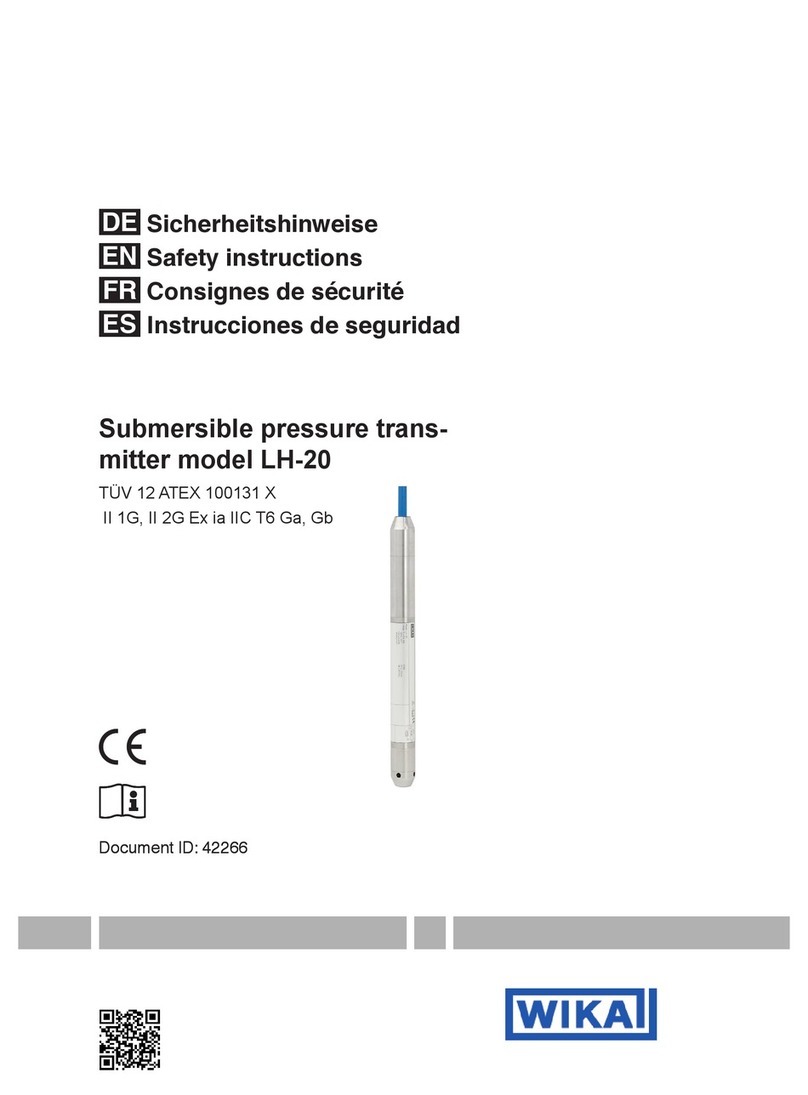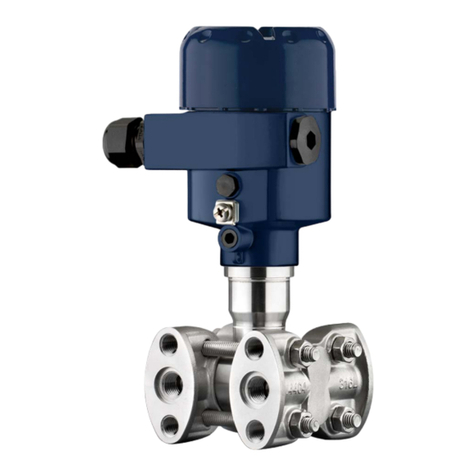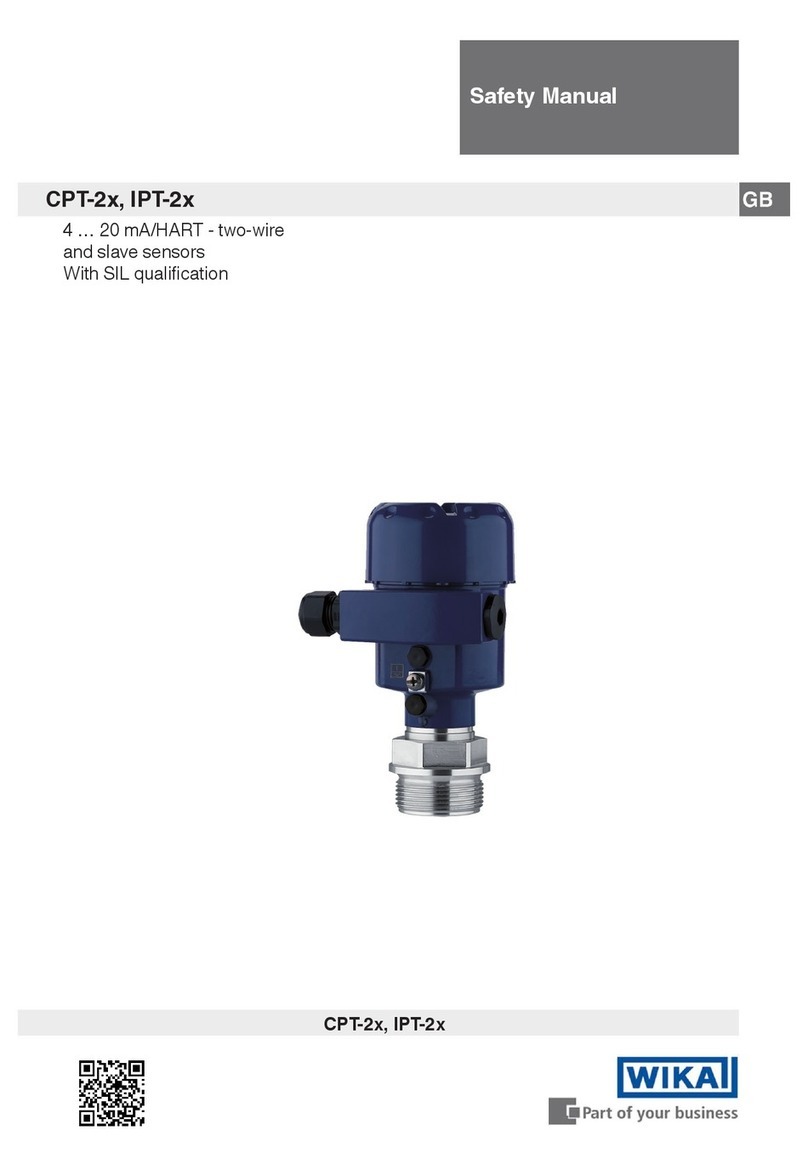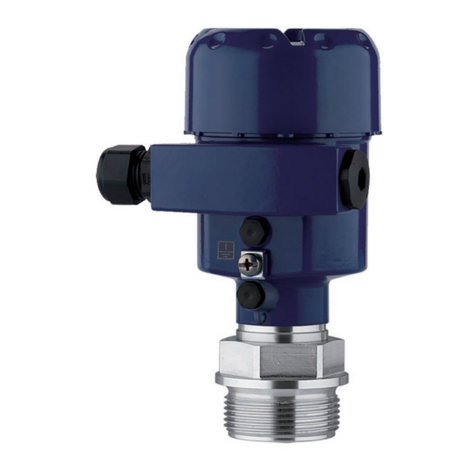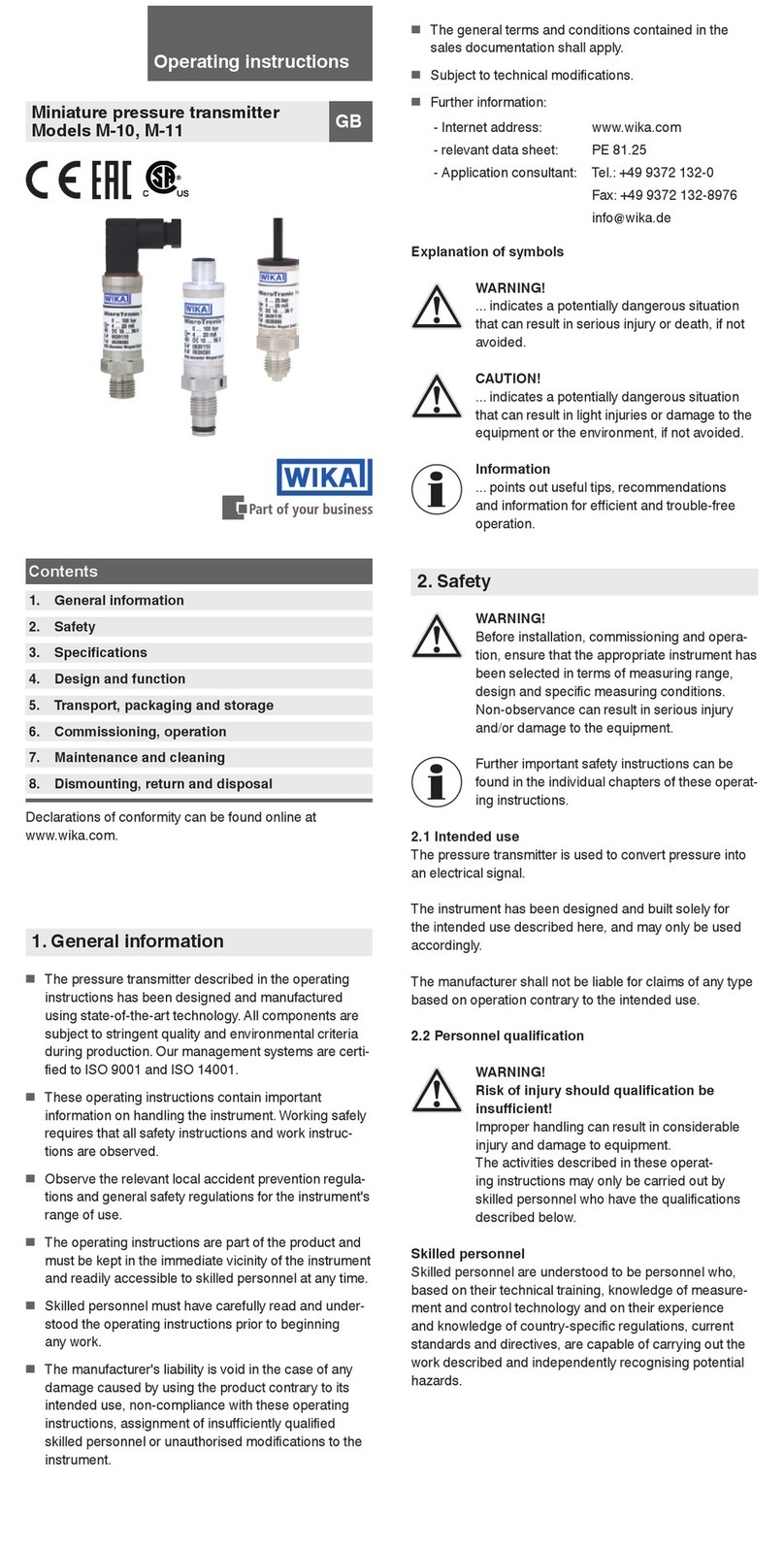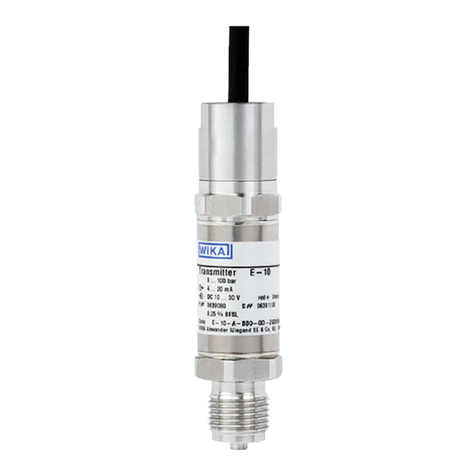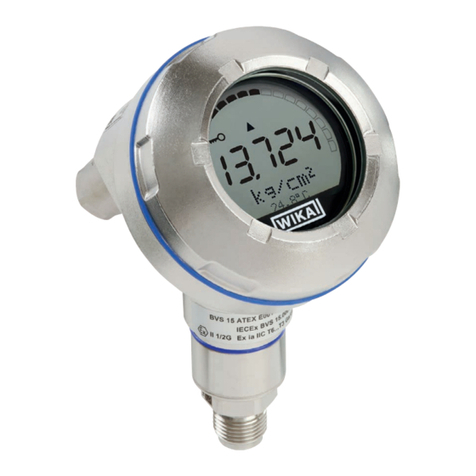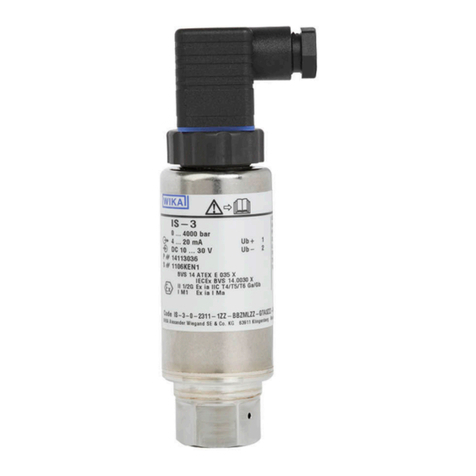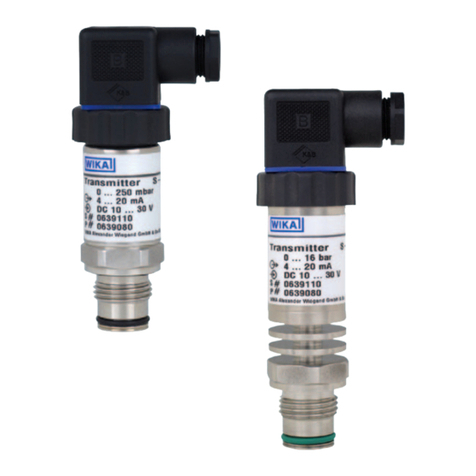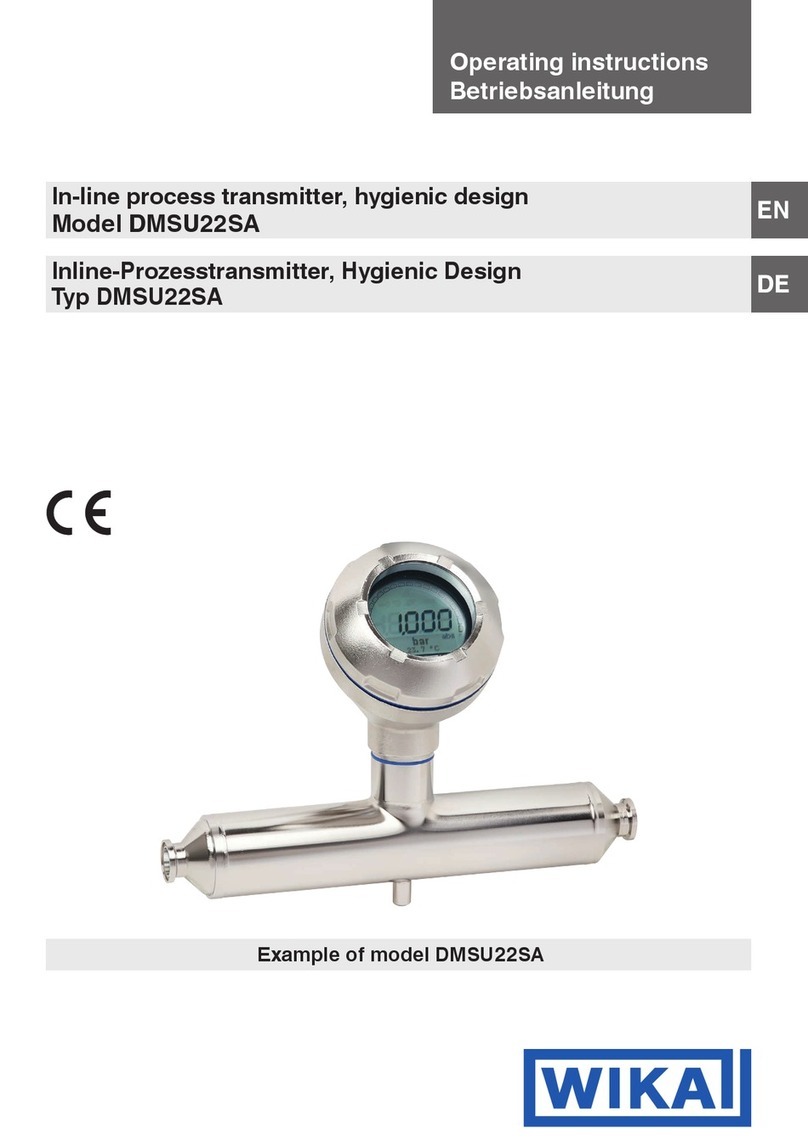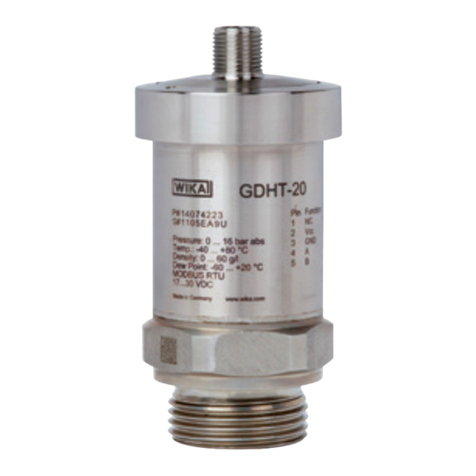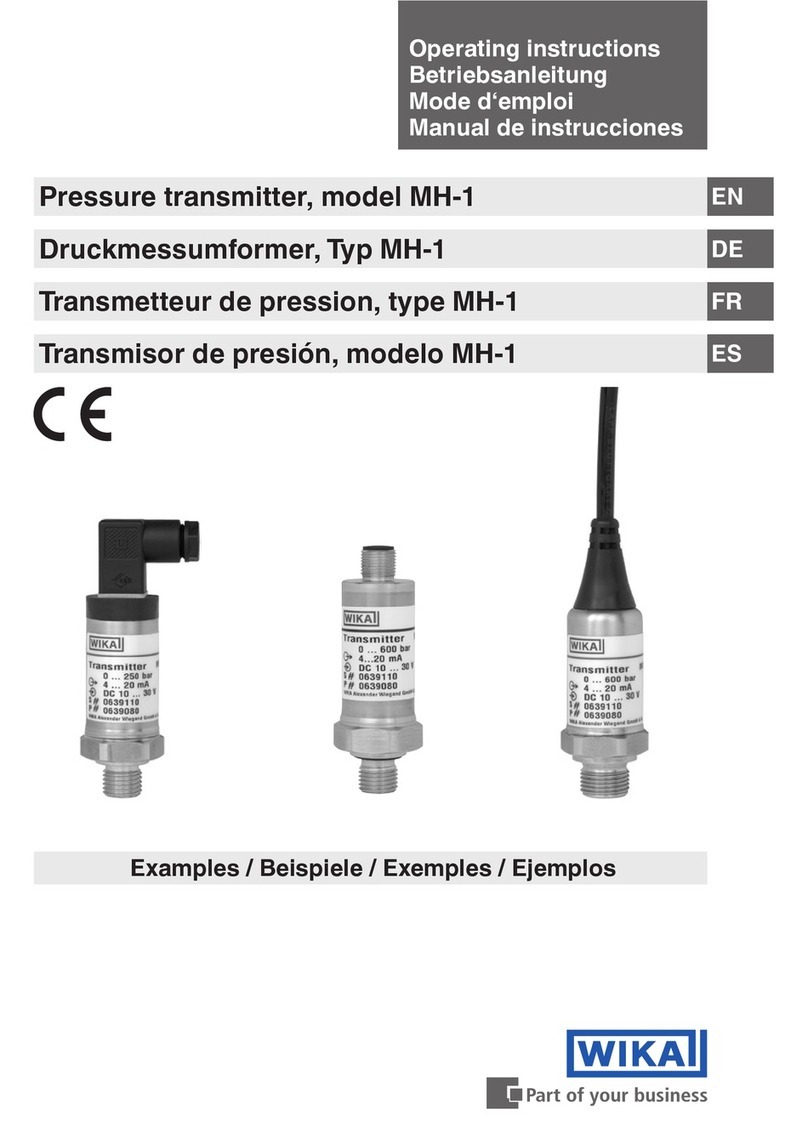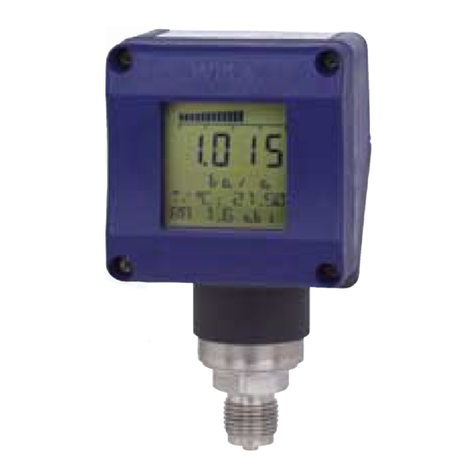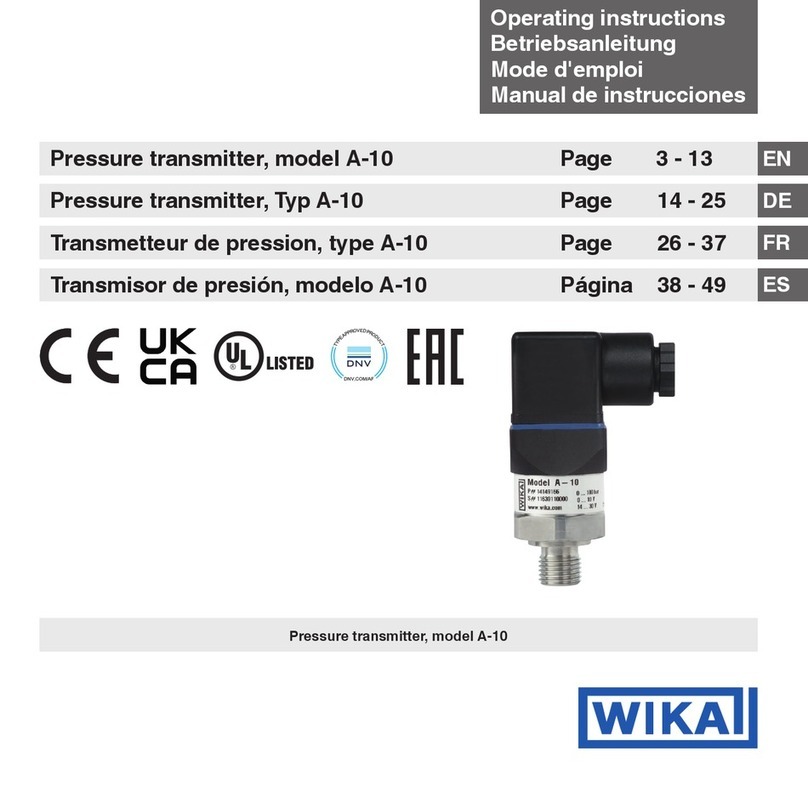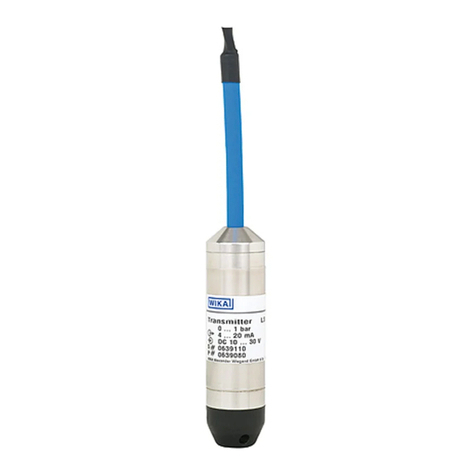
2187800.09 GB/D/F/E 04/2008
18 WIKA Operating instructions/Betriebsanleitung/Mode d'emploi/Instrucciones de servicio IS-10, IS-11
2187800.09 GB/D/F/E 04/2008
19
WIKA Operating instructions/Betriebsanleitung/Mode d'emploi/Instrucciones de servicio IS-10, IS-11
WIKA Alexander Wiegand Tel +49 · 93 72 · 132-0 Kommanditgesellschaft: Komplementärin: WIKA Alexander Wiegand Verwaltungs GmbH
GmbH & Co. KG Fax +49 · 93 72 · 132-406/414 Sitz Klingenberg Sitz Klingenberg
Alexander-Wiegand-Straße www.wika.de Amtsgericht Aschaffenburg Amtsgericht Aschaffenburg HRB 306
63911 Klingenberg · Germany info@wika.de HRA 1819 Geschäftsführer: Alexander Wiegand
EG-Konformitätserklärung EC Declaration of Conformity Déclaration de Conformité CE
Dokument Nr.: 6004102 Document No.: 6004102 Document Nr.: 6004102
Wir erklären in alleiniger
Verantwortung, daß die mit
gekennzeichneten Produkte
We declare under our sole
responsibility, that the
marked products
Nous déclarons sous notre
seule responsabilité que les
appareils marqués
Typ: IS-10, IS-11, IL-10 Model: IS-10, IS-11, IL-10 Type: IS-10, IS-11, IL-10
Beschreibung: Description: Description:
Eigensicherer
Druckmessumformer
Intrinsically safe pressure
transmitter
Transmetteur de pression,
version securite intrinseque
gemäß gültigem Datenblatt: according to the actual data-
sheet:
selon fiche technique en
vigueur:
PE 81.22 / PE 81.23 PE 81.22 / PE 81.23 PE 81.22 / PE 81.23
die grundlegenden
Anforderungen der Richtlinien
erfüllen.
fulfills the essential
requirements of the Directives
sont conformes aux exigences
essentielles de la directive
- 89/336/EWG (EMV)
- 94/9/EG (ATEX)
- 89/336/EEC (EMC)
- 94/9/EC (ATEX)
- 89/336/CEE (CEM)
- 94/9/CE (ATEX)
Die Prüfung der Geräte wurde
entsprechend den Normen:
The devices have been tested
according to the norm:
Les appareils ont été vérifiés
suivant les normes:
EMV: EN 61326:2002 EMC: EN 61326:2002 CEM: EN 61326:2002
ATEX: EN 50014:1997+A1+A2 ATEX: EN 50014:1997+A1+A2 ATEX: EN 50014:1997+A1+A2
ATEX: EN 50020: 2002 ATEX: EN 50020: 2002 ATEX: EN 50020: 2002
ATEX: EN 50284:1999 ATEX: EN 50284:1999 ATEX: EN 50284:1999
ATEX: EN 50303:2000 ATEX: EN 50303:2000 ATEX: EN 50303:2000
ATEX: EN 50281-1-1:1998+A1 ATEX: EN 50281-1-1:1998+A1 ATEX: EN 50281-1-1:1998+A1
durchgeführt.
WIKA Alexander Wiegand GmbH &
Co. KG
WIKA Alexander Wiegand GmbH
& Co. KG
WIKA Alexander Wiegand GmbH &
Co. KG
Klingenberg, 16.07.2004 Klingenberg, 16.07.2004 Klingenberg, 16.07.2004
Geschäftsbereich TRONIC Company division TRONIC Ressort TRONIC
i. V. Stefan Richter i. V. Stefan Richter i. V. Stefan Richter
Qualitätsmanagement TRONIC Quality management TRONIC Management de la qualitéTRONIC
i. A. Thomas Gerling i. A. Thomas Gerling i. A. Thomas Gerling
WIKA Alexander Wiegand Tel +49 · 93 72 · 132-0 Kommanditgesellschaft: Komplementärin: WIKA Alexander Wiegand Verwaltungs GmbH
GmbH & Co. KG Fax +49 · 93 72 · 132-406/414 Sitz Klingenberg Sitz Klingenberg
Alexander-Wiegand-Straße www.wika.de Amtsgericht Aschaffenburg Amtsgericht Aschaffenburg HRB 306
63911 Klingenberg · Germany info@wika.de HRA 1819 Geschäftsführer: Alexander Wiegand
EG-Konformitätserklärung EC Declaration of Conformity Déclaration de Conformité CE
Dokument Nr.: 6004102 Document No.: 6004102 Document Nr.: 6004102
Wir erklären in alleiniger
Verantwortung, daß die mit
gekennzeichneten Produkte
We declare under our sole
responsibility, that the
marked products
Nous déclarons sous notre
seule responsabilité que les
appareils marqués
Typ: IS-10, IS-11, IL-10 Model: IS-10, IS-11, IL-10 Type: IS-10, IS-11, IL-10
Beschreibung: Description: Description:
Eigensicherer
Druckmessumformer
Intrinsically safe pressure
transmitter
Transmetteur de pression,
version securite intrinseque
gemäß gültigem Datenblatt: according to the actual data-
sheet:
selon fiche technique en
vigueur:
PE 81.22 / PE 81.23 PE 81.22 / PE 81.23 PE 81.22 / PE 81.23
die grundlegenden
Anforderungen der Richtlinien
erfüllen.
fulfills the essential
requirements of the Directives
sont conformes aux exigences
essentielles de la directive
- 89/336/EWG (EMV)
- 94/9/EG (ATEX)
- 89/336/EEC (EMC)
- 94/9/EC (ATEX)
- 89/336/CEE (CEM)
- 94/9/CE (ATEX)
Die Prüfung der Geräte wurde
entsprechend den Normen:
The devices have been tested
according to the norm:
Les appareils ont été vérifiés
suivant les normes:
EMV: EN 61326:2002 EMC: EN 61326:2002 CEM: EN 61326:2002
ATEX: EN 50014:1997+A1+A2 ATEX: EN 50014:1997+A1+A2 ATEX: EN 50014:1997+A1+A2
ATEX: EN 50020: 2002 ATEX: EN 50020: 2002 ATEX: EN 50020: 2002
ATEX: EN 50284:1999 ATEX: EN 50284:1999 ATEX: EN 50284:1999
ATEX: EN 50303:2000 ATEX: EN 50303:2000 ATEX: EN 50303:2000
ATEX: EN 50281-1-1:1998+A1 ATEX: EN 50281-1-1:1998+A1 ATEX: EN 50281-1-1:1998+A1
durchgeführt.
WIKA Alexander Wiegand GmbH &
Co. KG
WIKA Alexander Wiegand GmbH
& Co. KG
WIKA Alexander Wiegand GmbH &
Co. KG
Klingenberg, 16.07.2004 Klingenberg, 16.07.2004 Klingenberg, 16.07.2004
Geschäftsbereich TRONIC Company division TRONIC Ressort TRONIC
i. V. Stefan Richter i. V. Stefan Richter i. V. Stefan Richter
Qualitätsmanagement TRONIC Quality management TRONIC Management de la qualitéTRONIC
i. A. Thomas Gerling i. A. Thomas Gerling i. A. Thomas Gerling
WIKA Alexander Wiegand Tel +49 · 93 72 · 132-0 Kommanditgesellschaft: Komplementärin: WIKA Alexander Wiegand Verwaltungs GmbH
GmbH & Co. KG Fax +49 · 93 72 · 132-406/414 Sitz Klingenberg Sitz Klingenberg
Alexander-Wiegand-Straße www.wika.de Amtsgericht Aschaffenburg Amtsgericht Aschaffenburg HRB 306
63911 Klingenberg · Germany info@wika.de HRA 1819 Geschäftsführer: Alexander Wiegand
EG-Konformitätserklärung EC Declaration of Conformity Déclaration de Conformité CE
Dokument Nr.: 6004102 Document No.: 6004102 Document Nr.: 6004102
Wir erklären in alleiniger
Verantwortung, daß die mit
gekennzeichneten Produkte
We declare under our sole
responsibility, that the
marked products
Nous déclarons sous notre
seule responsabilité que les
appareils marqués
Typ: IS-10, IS-11, IL-10 Model: IS-10, IS-11, IL-10 Type: IS-10, IS-11, IL-10
Beschreibung: Description: Description:
Eigensicherer
Druckmessumformer
Intrinsically safe pressure
transmitter
Transmetteur de pression,
version securite intrinseque
gemäß gültigem Datenblatt: according to the actual data-
sheet:
selon fiche technique en
vigueur:
PE 81.22 / PE 81.23 PE 81.22 / PE 81.23 PE 81.22 / PE 81.23
die grundlegenden
Anforderungen der Richtlinien
erfüllen.
fulfills the essential
requirements of the Directives
sont conformes aux exigences
essentielles de la directive
- 89/336/EWG (EMV)
- 94/9/EG (ATEX)
- 89/336/EEC (EMC)
- 94/9/EC (ATEX)
- 89/336/CEE (CEM)
- 94/9/CE (ATEX)
Die Prüfung der Geräte wurde
entsprechend den Normen:
The devices have been tested
according to the norm:
Les appareils ont été vérifiés
suivant les normes:
EMV: EN 61326:2002 EMC: EN 61326:2002 CEM: EN 61326:2002
ATEX: EN 50014:1997+A1+A2 ATEX: EN 50014:1997+A1+A2 ATEX: EN 50014:1997+A1+A2
ATEX: EN 50020: 2002 ATEX: EN 50020: 2002 ATEX: EN 50020: 2002
ATEX: EN 50284:1999 ATEX: EN 50284:1999 ATEX: EN 50284:1999
ATEX: EN 50303:2000 ATEX: EN 50303:2000 ATEX: EN 50303:2000
ATEX: EN 50281-1-1:1998+A1 ATEX: EN 50281-1-1:1998+A1 ATEX: EN 50281-1-1:1998+A1
durchgeführt.
WIKA Alexander Wiegand GmbH &
Co. KG
WIKA Alexander Wiegand GmbH
& Co. KG
WIKA Alexander Wiegand GmbH &
Co. KG
Klingenberg, 16.07.2004 Klingenberg, 16.07.2004 Klingenberg, 16.07.2004
Geschäftsbereich TRONIC Company division TRONIC Ressort TRONIC
i. V. Stefan Richter i. V. Stefan Richter i. V. Stefan Richter
Qualitätsmanagement TRONIC Quality management TRONIC Management de la qualitéTRONIC
i. A. Thomas Gerling i. A. Thomas Gerling i. A. Thomas Gerling
11. Storage, disposal / 12. EC declaration of conformity GB
11. Storage, disposal
When storing or disposing of the pressure transmitter, take precautions with
regard to remaining media in removed pressure transmitters. We recom-
mend cleaning the transmitter properly and carefully. Remaining media in
the pressure port may be hazardous or toxic!
Mount the protection cap when storing the pressure transmitter in order to prevent any
damage to the diaphragm (IS-11).
Dispose of instrument components and packaging materials in accordance with the
respective waste treatment and disposal regulations of the region or country to which
the instrument is supplied.
Storage
Disposal
12. EC declaration of conformity
WIKA reserves the right to alter these technical specifications.
1. Wichiges zu Ihrer Information D
Zulassung ATEX:
Druckmessgerät zur bestimmungsgemäßen Verwendung in explosionsgefährdeten Bereichen
(siehe beiliegende EG-Baumusterprüfbescheinigung DMT 00 ATEX E 045 X).
ATEX Zulassungseigenschaften: Für Gase und Nebel Einbau in Zone 1, Zone 2. Anbau an
Zone 0. Bergbau Kategorie M1, M2.
1. Wichtiges zu Ihrer Information
Lesen Sie diese Betriebsanleitung vor Montage und Inbetriebnahme des Druckmessgerätes.
Bewahren Sie die Betriebsanleitung an einem für alle Benutzer jederzeit zugänglichen Ort auf.
Die nachfolgenden Einbau- und Betriebshinweise haben wir mit Sorgfalt zusammengestellt.
Es ist jedoch nicht möglich, alle erdenklichen Anwendungsfälle zu berücksichtigen. Sollten Sie
Hinweise für Ihre spezielle Aufgabenstellung vermissen, können Sie hier weitere Informationen
finden:
Über unsere Internet-Adresse www.wika.de / www.wika.com
Die Bezeichnung des zugehörigen Datenblattes ist PE 81.22
Anwendungsberater: (+49) 9372/132-295
Wird die Seriennummer unleserlich (z. B. durch mechanische Beschädigung oder Übermalen),
ist eine Rückverfolgbarkeit nicht mehr möglich.
Die in der Betriebsanleitung beschriebenen WIKA-Druckmessgeräte werden nach den
neuesten Erkenntnissen konstruiert und gefertigt. Alle Komponenten unterliegen während der
Fertigung strengen Qualitäts- und Umweltkriterien. Unser Umweltmanagementsystem ist nach
DIN EN ISO 14001 zertifiziert.
Bestimmungsgemäße Produktverwendung IS-10, IS-11:
Verwenden Sie den eigensicheren Druckmessumformer, um in explosionsgefährdeten
Bereichen Druck in ein elektrisches Signal zu wandeln.
Ihre erforderlichen Kenntnisse
Montieren und nehmen Sie das Druckmessgerät nur in Betrieb, wenn Sie mit den zutreffenden
landesspezifischen Richtlinien vertraut sind und die entsprechende Qualifikation besitzen.
Sie müssen mit den Vorschriften und Kenntnissen für explosionsgefährdete Bereiche, Mess-
und Regeltechnik sowie elektrische Stromkreise vertraut sein, da das Druckmessgerät ein
„elektrisches Betriebsmittel“ nach EN 50178 ist. Je nach Einsatzbedingung müssen Sie über
entsprechendes Wissen verfügen, z. B. über agressive Medien.
!
Warning







